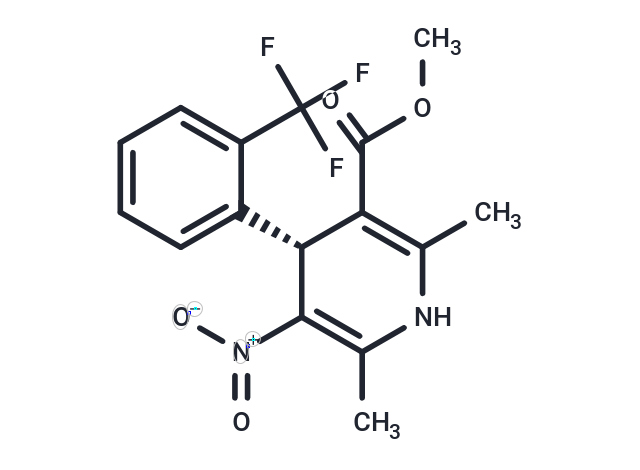Shopping Cart
- Remove All
 Your shopping cart is currently empty
Your shopping cart is currently empty

(R)-(+)-Bay-K-8644 is a Ca2+ channel and dihydropyridine agonist that inhibits Ba2+ currents (IBa), induces central respiratory depression in cats, and inhibits platelet activation through competitive antagonism of thromboxane A2-prostaglandin H2 receptors.

| Pack Size | Price | Availability | Quantity |
|---|---|---|---|
| 1 mg | $54 | 5 days | |
| 5 mg | $129 | In Stock |
| Description | (R)-(+)-Bay-K-8644 is a Ca2+ channel and dihydropyridine agonist that inhibits Ba2+ currents (IBa), induces central respiratory depression in cats, and inhibits platelet activation through competitive antagonism of thromboxane A2-prostaglandin H2 receptors. |
| Targets&IC50 | Iba:957 nM |
| In vitro | (R)-(+)-Bay-K-8644, a component of the racemic mixture Bay K 8644, is a well-known L-type Ca2+ channel agonist but functions as an inhibitor of Ba2+ currents (IBa) with an IC50 of 975 nM. At a concentration of 0.5 μM, it reduces IBa to 71±10% of the control level, demonstrating its efficacy in inhibiting Ba2+ currents. Notably, this compound acts as a calcium channel inhibitor, crucial for modulating calcium channel activity [2]. |
| Alias | (R)-(+)-Bay K 8644 |
| Molecular Weight | 356.3 |
| Formula | C16H15F3N2O4 |
| Cas No. | 98791-67-4 |
| Smiles | COC(=O)C1=C(C)NC(C)=C([C@@H]1c1ccccc1C(F)(F)F)[N+]([O-])=O |
| Relative Density. | 1.37g/cm3 |
| Storage | store at low temperature | Powder: -20°C for 3 years | In solvent: -80°C for 1 year | Shipping with blue ice. | |||||||||||||||||||||||||||||||||||
| Solubility Information | DMSO: 100 mg/mL (280.66 mM), Sonication is recommended. | |||||||||||||||||||||||||||||||||||
Solution Preparation Table | ||||||||||||||||||||||||||||||||||||
DMSO
| ||||||||||||||||||||||||||||||||||||

Copyright © 2015-2025 TargetMol Chemicals Inc. All Rights Reserved.